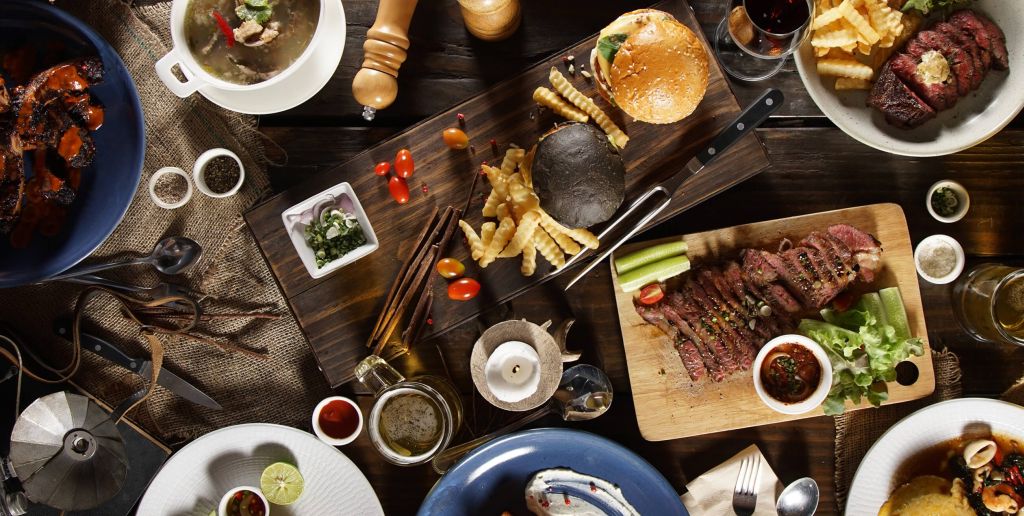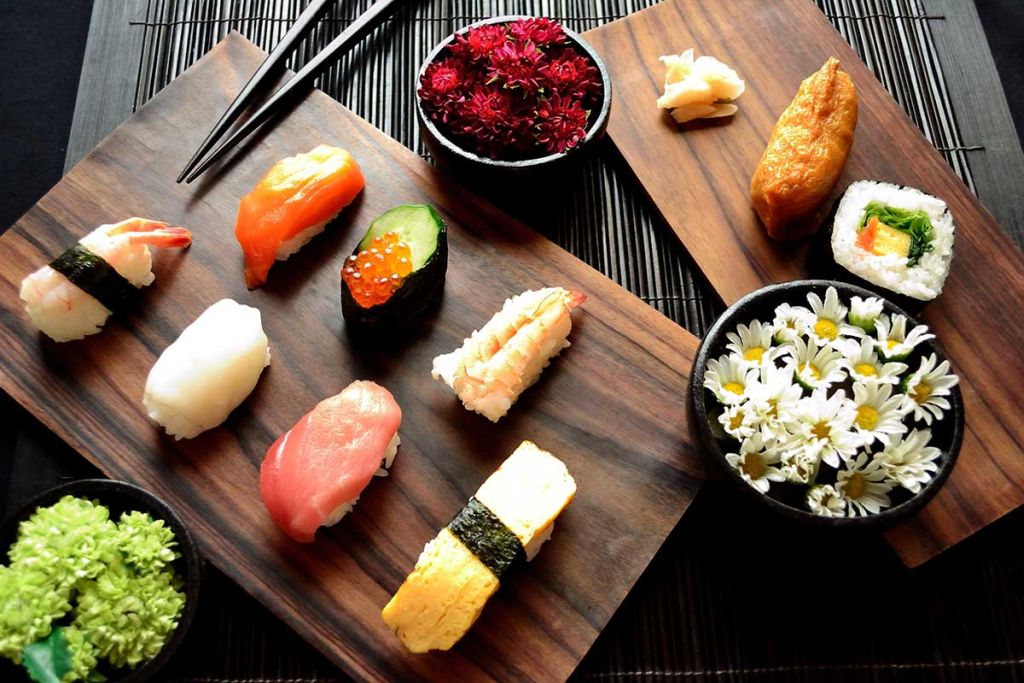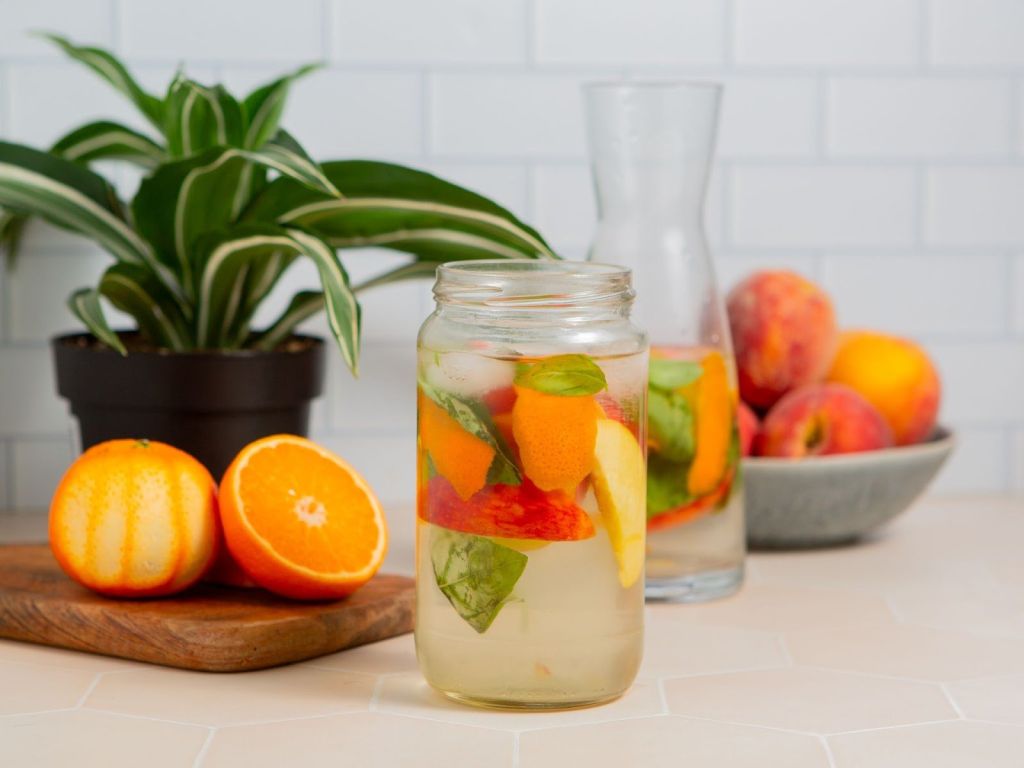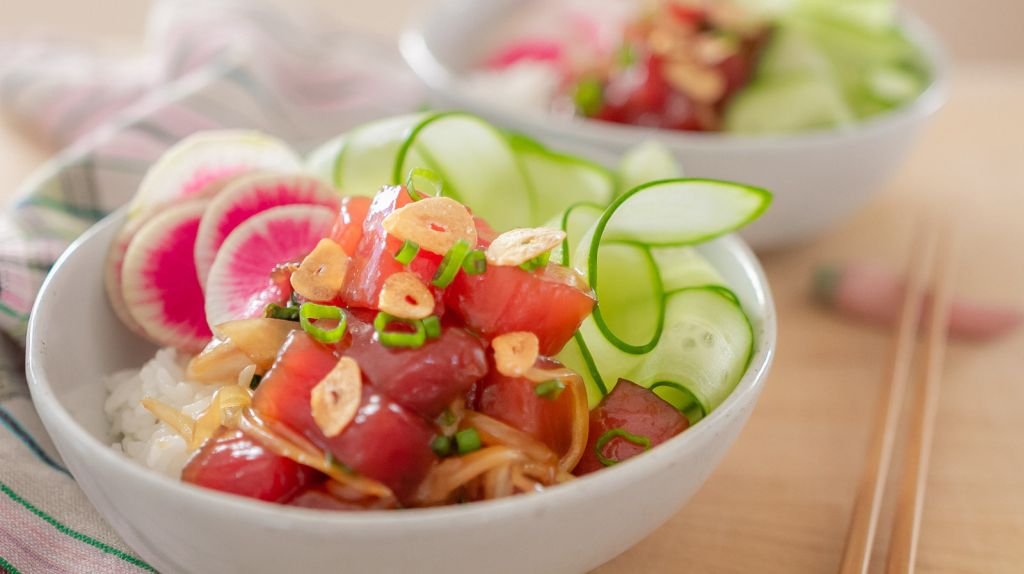Food and Cooking
Detox Water Health Benefits and Myths

Detox water has gained popularity in recent years as a simple and tasty way to boost health and cleanse the body. Infused with fruits, vegetables, and herbs, detox water is touted for its numerous health benefits. However, with the rise in its popularity, several myths have also emerged. This article aims to explore the true health benefits of detox water and debunk some of the common myths surrounding it.
Detox water is essentially water that has been infused with the flavors of fresh fruits, vegetables, or herbs. It is often marketed as a miracle drink that can help with weight loss, improve skin health, flush out toxins, and boost energy levels. But how much of these claims are actually true? In this article, we will delve into the real benefits of detox water and clear up some misconceptions.
1. Real Health Benefits of Detox Water
Detox water can indeed be beneficial, but it’s important to understand what those benefits are and how they are achieved.
Hydration and Its Importance
One of the primary benefits of detox water is hydration. Staying hydrated is crucial for overall health, as water plays a key role in almost every bodily function, from regulating body temperature to supporting digestion and nutrient absorption. Infusing water with fruits and herbs can make it more enjoyable to drink, encouraging increased water intake.
Nutrient Boost
While the nutrient content of detox water is relatively low compared to eating whole fruits and vegetables, it does provide a subtle boost. Vitamins and minerals from the ingredients can leach into the water, offering a mild intake of these nutrients. For example, lemon-infused water contains a small amount of vitamin C, which is an antioxidant that supports the immune system and skin health.
Aids in Weight Management
Drinking detox water can aid in weight management. Replacing sugary drinks like sodas and juices with detox water reduces calorie intake and can help prevent weight gain. Additionally, some ingredients, like cucumber and mint, may have mild diuretic properties, helping to reduce water retention and bloating.

2. Common Myths About Detox Water
While detox water does have some benefits, there are several myths that need to be addressed to avoid misinformation.
Myth: Detox Water Flushes Out Toxins
One of the most pervasive myths is that detox water can flush out toxins from the body. The truth is, our bodies have highly efficient detoxification systems in place, namely the liver, kidneys, and digestive system. Drinking detox water does not enhance these natural processes. Staying hydrated, in general, supports the kidneys in filtering waste, but detox water doesn’t provide any magical detoxifying properties.
Myth: Detox Water is a Miracle Weight Loss Solution
While detox water can support weight loss by reducing calorie intake and promoting hydration, it is not a miracle solution. Weight loss requires a balanced diet, regular exercise, and healthy lifestyle choices. Detox water alone cannot lead to significant weight loss. It can, however, be a helpful component of a comprehensive weight loss plan.
Myth: Detox Water Can Cure Diseases
There is no scientific evidence to support claims that detox water can cure diseases. While ingredients like ginger and turmeric have anti-inflammatory properties, the amounts present in detox water are too small to have a significant therapeutic effect. For health issues, it is always best to consult with a healthcare professional.
3. Popular Detox Water Recipes
Creating detox water at home is simple and allows you to customize the flavors to your liking. Here are some popular combinations.
Lemon and Mint Detox Water
Lemon and mint detox water is a classic choice. Lemon provides a refreshing citrus flavor and a small amount of vitamin C, while mint adds a cooling effect and can aid digestion. Simply add slices of lemon and a few fresh mint leaves to a jug of water and let it infuse for a few hours.
Cucumber and Basil Detox Water
Cucumber and basil detox water is another popular option. Cucumber is hydrating and has a mild diuretic effect, while basil adds a unique flavor and contains antioxidants. Slice a cucumber and add it to a jug of water along with a handful of basil leaves.
Berry Detox Water
Berries like strawberries, blueberries, and raspberries can add a burst of flavor and antioxidants to your water. Crush a handful of berries slightly to release their juices and add them to a jug of water. Let it sit for a few hours to allow the flavors to meld.
4. How to Incorporate Detox Water into Your Daily Routine
Incorporating detox water into your daily routine can be a simple and enjoyable way to stay hydrated and enjoy some added flavor.
Start Your Day with Detox Water
Begin your day with a glass of detox water to kickstart your hydration. Prepare a jug the night before and leave it in the refrigerator so it’s ready to go in the morning.
Keep It Accessible
Keep a bottle of detox water with you throughout the day. Having it on hand can encourage you to drink more water and make healthier beverage choices.
Experiment with Flavors
Don’t be afraid to experiment with different flavor combinations to keep things interesting. Using seasonal fruits and herbs can add variety and ensure you don’t get bored with the same taste.
Conclusion
Detox water can be a delicious and refreshing way to stay hydrated and enjoy a subtle boost of nutrients. While it offers some health benefits, it is not a miracle cure for detoxification, weight loss, or disease prevention. By understanding the real benefits and debunking common myths, you can make the most of detox water as part of a balanced and healthy lifestyle. Enjoy experimenting with different recipes and incorporate it into your daily routine for a refreshing hydration experience.

Food and Cooking
Journey Through Global Flavors

In a world teeming with diverse cultures and traditions, food serves as a universal language that brings people together. The exploration of cultural cuisine is not just about tasting new dishes; it’s a journey into the heart of different societies, their histories, and their ways of life. This article delves into the fascinating world of cultural cuisine exploration, highlighting its significance, benefits, and some must-try dishes from around the globe.
The Significance of Cultural Cuisine Exploration
Cultural cuisine exploration is more than a gastronomic adventure; it’s an educational experience. Each dish tells a story, often reflecting the geography, climate, and history of its origin. For instance, the spices in Indian curries are a testament to the country’s historic spice trade, while the simplicity of Japanese sushi showcases the nation’s appreciation for fresh, high-quality ingredients.
Engaging with different cuisines allows us to appreciate and respect the diversity of our world. It broadens our palate and exposes us to new flavors and cooking techniques. Moreover, it fosters cultural understanding and empathy, as we learn about the traditions and values of other communities through their food.
Benefits of Cultural Cuisine Exploration
- Broadened Culinary Horizons: Trying new foods expands your culinary repertoire. You discover new ingredients, cooking methods, and flavor combinations that you can incorporate into your own cooking.
- Cultural Appreciation: Food is an integral part of cultural identity. Exploring different cuisines helps you appreciate the cultural significance behind various dishes and cooking practices.
- Health Benefits: Many traditional diets are balanced and nutritious. For instance, the Mediterranean diet, rich in fruits, vegetables, and healthy fats, is renowned for its health benefits.
- Social Connection: Food brings people together. Whether it’s sharing a meal with friends or participating in a cooking class, cultural cuisine exploration is a social activity that can strengthen bonds and create lasting memories.
Must-Try Dishes from Around the World
Italian: Risotto
Italian cuisine is beloved worldwide for its rich flavors and comforting dishes. Risotto, a creamy rice dish cooked with broth until it reaches a velvety consistency, is a must-try. Commonly flavored with Parmesan cheese, butter, and onions, risotto can also include a variety of ingredients such as mushrooms, seafood, or saffron.
Mexican: Tacos al Pastor
Tacos al Pastor is a classic Mexican street food that has gained international fame. Made with spit-grilled pork marinated in a blend of chilies, spices, and pineapple, it’s served on a corn tortilla and topped with onions, cilantro, and a squeeze of lime. This dish exemplifies the bold, vibrant flavors of Mexican cuisine.

Japanese: Sushi
Sushi, a quintessential Japanese dish, is both an art and a culinary delight. It typically consists of vinegared rice, raw or cooked seafood, and vegetables, all meticulously prepared and presented. Sushi not only highlights the freshness of its ingredients but also emphasizes balance and harmony, core principles of Japanese culture.
Indian: Butter Chicken
Butter chicken, or Murgh Makhani, is a staple of Indian cuisine. This rich and creamy dish features marinated chicken cooked in a tomato-based curry sauce with butter and cream. It’s often served with naan bread or basmati rice, making it a comforting and flavorful meal.
Thai: Pad Thai
Pad Thai is a popular Thai street food that has become a favorite around the world. This stir-fried noodle dish combines rice noodles, tofu or shrimp, eggs, and bean sprouts, tossed in a tangy tamarind sauce and garnished with crushed peanuts and lime. Its sweet, sour, and savory flavors create a harmonious balance that is quintessentially Thai.
Moroccan: Tagine
Tagine is a North African stew named after the earthenware pot in which it is traditionally cooked. It often includes meat (such as lamb or chicken), vegetables, dried fruits, and a variety of spices like cumin, coriander, and cinnamon. The slow-cooking method allows the flavors to meld together, creating a rich and aromatic dish.
French: Coq au Vin
French cuisine is renowned for its sophistication and technique. Coq au Vin, a classic French dish, features chicken braised in red wine with mushrooms, onions, and garlic. This hearty dish is a testament to the French art of slow cooking and layering flavors.
Ethiopian: Injera with Doro Wat
Injera, a spongy flatbread made from teff flour, is a staple in Ethiopian cuisine. It’s typically served with a variety of stews, including Doro Wat, a spicy chicken stew made with berbere spice blend and hard-boiled eggs. Eating with your hands, using injera to scoop up the stew, adds to the communal and immersive dining experience.
Conclusion
Cultural cuisine exploration offers a gateway to understanding and appreciating the world’s diverse cultures. By tasting and learning about different dishes, we embark on a journey that transcends geographical boundaries, bringing us closer to the heart of each culture. Whether you’re a seasoned foodie or just beginning your culinary adventure, these global dishes are sure to inspire and delight your palate. So, grab your fork, spoon, or chopsticks, and start your cultural cuisine exploration today!
Food and Cooking
Cooking for Special Diets

In today’s diverse culinary landscape, cooking for special diets has become increasingly common. Whether catering to allergies, lifestyle choices, or health conditions, preparing meals that meet specific dietary requirements is essential for many people. This guide delves into various special diets, offering tips, recipes, and insights to help you cook delicious and nutritious meals for everyone at your table.
Understanding Special Diets
Special diets vary widely, but they generally fall into a few main categories: food allergies and intolerances, medical conditions, and lifestyle choices. Understanding the basics of each can help you create meals that meet specific needs without sacrificing flavor or nutrition.
Food Allergies and Intolerances
Food allergies and intolerances are immune system reactions to certain foods. Common allergens include:
- Gluten: Found in wheat, barley, and rye, gluten can cause serious health issues for those with celiac disease or gluten sensitivity.
- Dairy: Lactose intolerance and dairy allergies require the avoidance of milk, cheese, and other dairy products.
- Nuts: Nut allergies can be life-threatening and necessitate the complete exclusion of nuts from the diet.
- Shellfish: Shellfish allergies require avoiding shrimp, crab, and other similar seafood.
Medical Conditions
Certain medical conditions necessitate specific dietary adjustments:
- Diabetes: Managing blood sugar levels is crucial for diabetics, requiring a focus on low-glycemic foods and controlled carbohydrate intake.
- Heart Disease: A heart-healthy diet emphasizes low-fat, low-cholesterol foods, rich in fruits, vegetables, and whole grains.
- Kidney Disease: Individuals with kidney disease may need to limit protein, sodium, and potassium intake.
Lifestyle Choices
Many people choose specific diets for ethical, environmental, or health reasons:
- Vegan: Excludes all animal products, including meat, dairy, eggs, and honey.
- Vegetarian: Avoids meat but may include dairy and eggs.
- Paleo: Focuses on whole, unprocessed foods that would have been available to our pre-agricultural ancestors.
- Keto: High in fat, moderate in protein, and very low in carbohydrates, this diet aims to put the body into a state of ketosis.
Cooking for Special Diets
Cooking for special diets involves careful planning and a willingness to experiment with substitutions and new ingredients. Here are some practical tips and recipes to get you started.
Tips for Success
- Read Labels Carefully: Always check ingredient lists for hidden allergens or non-compliant ingredients.
- Stock Your Pantry: Keep essential ingredients for the diet you’re catering to on hand. For example, gluten-free flours, dairy-free milk, or plant-based proteins.
- Learn Substitutions: Familiarize yourself with common substitutes, such as using applesauce instead of eggs in baking or coconut aminos in place of soy sauce.
- Experiment with Recipes: Don’t be afraid to try new recipes and adapt old favorites to fit dietary needs.
- Cross-Contamination Awareness: Be mindful of cross-contamination, especially with severe allergies. Use separate utensils, cutting boards, and cookware when necessary.

Gluten-Free Recipe: Quinoa and Veggie Stir-Fry
This gluten-free stir-fry is packed with nutrients and flavor, making it a perfect meal for those avoiding gluten.
Ingredients:
- 1 cup quinoa
- 2 cups water
- 1 tablespoon olive oil
- 1 bell pepper, sliced
- 1 zucchini, sliced
- 1 carrot, julienned
- 1 cup broccoli florets
- 2 cloves garlic, minced
- 1/4 cup gluten-free soy sauce
- 1 tablespoon sesame oil
- 1 teaspoon ginger, grated
- Green onions and sesame seeds for garnish
Instructions:
- Rinse quinoa under cold water. Combine quinoa and water in a pot and bring to a boil. Reduce heat, cover, and simmer for 15 minutes, or until water is absorbed.
- In a large pan, heat olive oil over medium heat. Add garlic and ginger, sautéing until fragrant.
- Add bell pepper, zucchini, carrot, and broccoli. Cook until vegetables are tender-crisp.
- Stir in cooked quinoa, soy sauce, and sesame oil. Mix well and cook for an additional 2-3 minutes.
- Garnish with green onions and sesame seeds before serving.
Dairy-Free Recipe: Creamy Cashew Alfredo Pasta
This dairy-free Alfredo pasta uses cashews to create a rich and creamy sauce that rivals the traditional version.
Ingredients:
- 1 cup raw cashews, soaked overnight
- 1 cup water
- 2 cloves garlic
- 1 tablespoon nutritional yeast
- Juice of 1 lemon
- Salt and pepper to taste
- 8 ounces pasta of choice (gluten-free if needed)
- 1 tablespoon olive oil
- 1 cup mushrooms, sliced
- 1 cup spinach
Instructions:
- Cook pasta according to package instructions.
- Drain and rinse soaked cashews. In a blender, combine cashews, water, garlic, nutritional yeast, lemon juice, salt, and pepper. Blend until smooth.
- In a pan, heat olive oil over medium heat. Add mushrooms and sauté until tender.
- Add spinach and cook until wilted.
- Stir in cashew Alfredo sauce and cooked pasta. Mix well and heat through.
- Serve immediately, garnished with additional nutritional yeast if desired.
Vegan Recipe: Chickpea and Sweet Potato Curry
This hearty vegan curry is full of flavor and perfect for a satisfying meal.
Ingredients:
- 1 tablespoon coconut oil
- 1 onion, diced
- 3 cloves garlic, minced
- 1 tablespoon ginger, minced
- 1 tablespoon curry powder
- 1 teaspoon turmeric
- 1 can coconut milk
- 1 can diced tomatoes
- 1 sweet potato, cubed
- 1 can chickpeas, drained and rinsed
- 1 cup spinach
- Salt and pepper to taste
- Fresh cilantro for garnish
Instructions:
- In a large pot, heat coconut oil over medium heat. Add onion, garlic, and ginger, sautéing until fragrant.
- Stir in curry powder and turmeric, cooking for an additional minute.
- Add coconut milk, diced tomatoes, sweet potato, and chickpeas. Bring to a simmer and cook until sweet potato is tender, about 20 minutes.
- Stir in spinach and cook until wilted.
- Season with salt and pepper. Garnish with fresh cilantro before serving.
Conclusion
Cooking for special diets may seem challenging at first, but with the right knowledge and resources, it can be a rewarding experience. By understanding the basics of various diets and learning how to adapt recipes, you can create delicious and inclusive meals that cater to everyone’s needs. Whether you’re cooking for allergies, medical conditions, or lifestyle choices, this guide provides a starting point for culinary success. Embrace the adventure of cooking for special diets, and discover new flavors and techniques along the way.
Food and Cooking
Best Food for Hot Summer Days

As the temperature rises, it’s important to adjust your diet to stay cool and hydrated. The best foods for hot summer days are not only refreshing but also packed with nutrients to keep you energized and healthy. This guide highlights some of the best food options to enjoy during the sweltering summer months.
Introduction
Summer brings long days, sunshine, and the opportunity to enjoy a wide variety of delicious, fresh foods. However, the heat can also lead to dehydration and fatigue if you’re not careful about your diet. Choosing the right foods can help you stay cool, hydrated, and full of energy. In this article, we will explore some of the best foods to eat on hot summer days to keep you feeling your best.
1. Fresh Fruits: Nature’s Hydration
Fruits are an excellent choice for summer as they are high in water content and essential nutrients.
Watermelon: The Ultimate Summer Fruit
Watermelon is a quintessential summer fruit, known for its high water content—about 92%. This makes it incredibly hydrating, perfect for combating the summer heat. Watermelon is also rich in vitamins A and C, which support skin health and boost your immune system. Enjoy it sliced, in a fruit salad, or blended into a refreshing smoothie.
Berries: Nutrient-Packed Powerhouses
Strawberries, blueberries, raspberries, and blackberries are all excellent choices for hot days. They are high in antioxidants, vitamins, and fiber, making them both delicious and nutritious. Berries can be enjoyed on their own, mixed into yogurt, or added to salads for a burst of flavor and nutrition.

2. Light and Refreshing Salads
Salads are a fantastic way to enjoy a variety of vegetables and keep meals light and refreshing.
Cucumber and Tomato Salad
Cucumbers are about 95% water, making them one of the most hydrating vegetables. Tomatoes also have high water content and are rich in vitamins C and K. A simple salad with cucumbers, tomatoes, red onions, and a light vinaigrette is not only cooling but also packed with nutrients.
Mixed Greens with Citrus Dressing
Leafy greens like spinach, arugula, and romaine lettuce are perfect for summer salads. They are low in calories but high in vitamins and minerals. Adding a citrus dressing made from lemon or orange juice can enhance the flavors and provide an additional vitamin C boost. Top with some avocado for healthy fats and a creamy texture.
3. Cooling Dairy and Non-Dairy Options
Dairy and non-dairy products can offer cooling and refreshing options for summer diets.
Greek Yogurt: Protein-Packed and Versatile
Greek yogurt is a great source of protein and probiotics, which are beneficial for gut health. It can be enjoyed on its own, with fresh fruit, or as the base for smoothies. Its creamy texture and tangy flavor make it a versatile ingredient for various summer dishes.
Coconut Milk and Almond Milk Smoothies
Non-dairy milk alternatives like coconut milk and almond milk are perfect for creating light, refreshing smoothies. Combine them with fruits like mango, pineapple, or berries for a tropical treat. These smoothies are not only hydrating but also provide essential vitamins and minerals.
4. Hydrating Beverages
Staying hydrated is crucial during hot summer days, and certain beverages can help you achieve this while also offering nutritional benefits.
Infused Water
Water infused with fruits, herbs, and vegetables is a delicious way to stay hydrated. Combinations like cucumber and mint, lemon and basil, or strawberry and lime add a burst of flavor to plain water, making it more enjoyable to drink throughout the day. These infusions also provide a subtle intake of vitamins and antioxidants.
Iced Herbal Teas
Herbal teas such as chamomile, peppermint, or hibiscus can be brewed and chilled for a refreshing drink. These teas are naturally caffeine-free and offer various health benefits. For instance, peppermint tea can help with digestion and provide a cooling sensation, while hibiscus tea is rich in antioxidants and has a tangy flavor.
Conclusion
Choosing the right foods during hot summer days can help you stay cool, hydrated, and healthy. Fresh fruits like watermelon and berries provide essential hydration and nutrients, while light salads with cucumbers and tomatoes offer refreshing and nutritious meal options. Cooling dairy and non-dairy products, such as Greek yogurt and coconut milk smoothies, are perfect for a quick, nutritious snack. Finally, hydrating beverages like infused water and iced herbal teas can keep you refreshed throughout the day. By incorporating these foods into your diet, you can enjoy the summer months to the fullest while staying nourished and energized.
-

 Gardening1 year ago
Gardening1 year agoFall is the Best Time To Plant Shade Trees
-

 Food and Cooking1 year ago
Food and Cooking1 year agoCooking for Special Diets
-

 Gardening2 years ago
Gardening2 years agoThe Regal Prince Oak: A Superior Columnar Choice
-

 Food and Cooking1 year ago
Food and Cooking1 year agoThe Allure of Korean Evodia: A Gardener’s Delight
-

 Food and Cooking1 year ago
Food and Cooking1 year agoJourney Through Global Flavors
-

 Gardening2 years ago
Gardening2 years agoTop 4 Products For Your Home Garden
-

 Food and Cooking1 year ago
Food and Cooking1 year agoBest Food for Hot Summer Days
-

 Gardening1 year ago
Gardening1 year agoTop Dressing Your Lawn: How to Level Uneven Terrain


